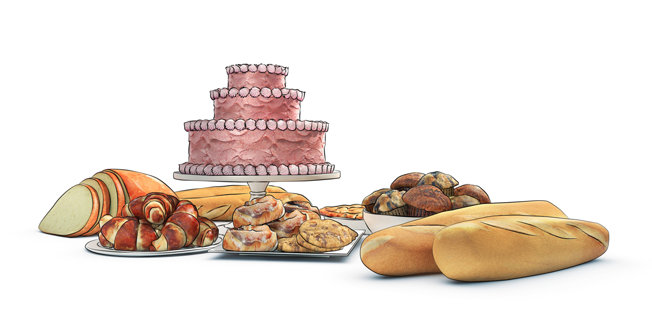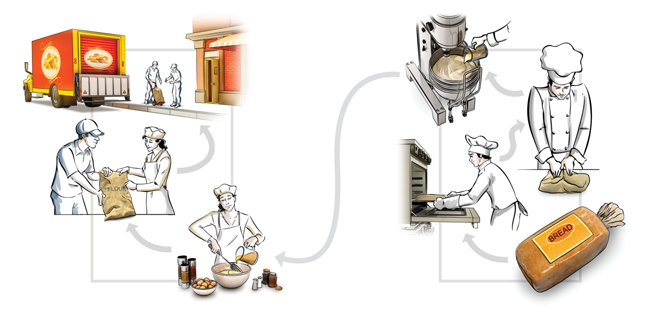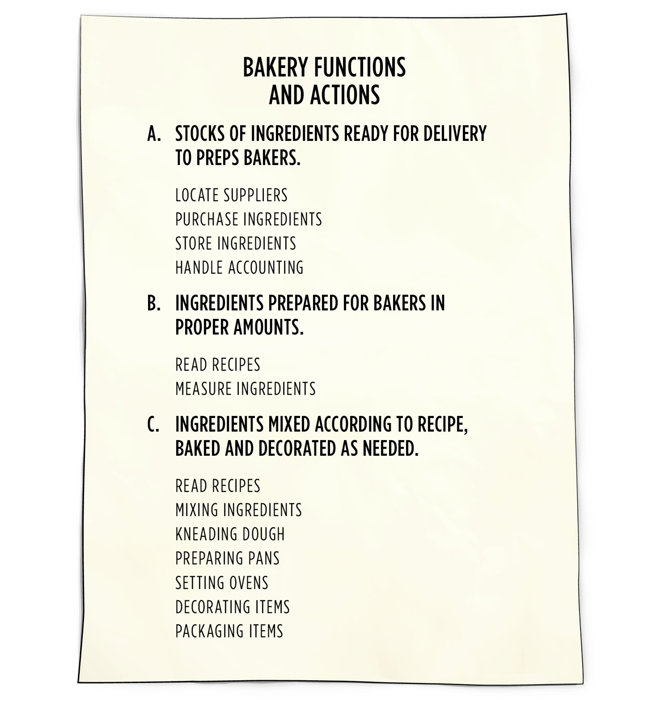Organizing and Hats
An Organizing Board is really a chart that shows the flow of products that are produced, one after another, by the people who work in an organization or company.
Each person in the organization has a job or position or “post.”
Each post can also be called a “hat.”
The word hat is slang for the title and work of a specific job in an organization. It is taken from the fact that in many professions, such as railroads, the type of hat worn shows the job the person does.
For example, on a train, the engineer who drives the train wears a type of hat.
Or a police officer wears a police officer’s hat.
A construction worker wears a kind of hat, a helmet, to protect him.
Any organization is made up of a number of people, each of whom has a “hat” or job to do.
In any organization, there is a flow of things from one hat to another, from person to person, employee to employee. And each hat or job in an organization produces a product that contributes to the final product of the organization.
The result of the whole Organizing Board is a product.
For example, a store sells computers. Some of the hats for this store would be:
The purchaser who orders the computers from the companies that make them.
The stocker who receives the computers ordered and puts them on the stock shelves.
The sales rep who sells the computers to the customers.
The cashier who takes the customers’ payments for their purchases.
Each of these is a hat that produces a product and contributes to the store’s final product—high-quality computers sold and delivered to customers.
Working Out an Org Board
The waste of people that happens when there is no Org Board and the loss of products produced by the organization give good reasons for any amount of work needed to draw up, make known and use a proper Org Board.
People expect to have an Org Board and want one and they protest if there isn’t one. The newest sailor who walks aboard a ship assumes that the ship has an Org Board, if there is one and if not posted on an actual board, at least one that is known. He assumes that there will be somebody in charge and that different activities will be under different people.
When there is no known Org Board, an employee or member of an organization will protest and feel insecure because he doesn’t know where he fits into the organization.
So having an Org Board and having a hat help a person feel like he belongs.
A person who has no hat is quite miserable. Or a person may have a hat that doesn’t seem like it is really needed and, in this case, he will feel like his job is just a “mistake.”
Morale then is also affected a lot by the quality of an Org Board or its absence. Morale is the mental and emotional attitude of an individual or a group and the amount of enthusiasm they show for the activity they are involved in. The overall test for a group, however, is its viability. Viability means its ability to grow, expand and be successful. Its viability depends on having an acceptable product that people will want. Groups that do not have an acceptable product fail.
The amount of products produced and the acceptability of the products given to others depends very much on having a workable Org Board. The employees or members of the organization must know and use the Org Board.
Even a single person or a small group, to have any success at all, needs a very exact Org Board. In fact, the smaller the group, the more important the Org Board becomes. But often a single person or a small group does not have one. And large groups fall apart if there is no Org Board or a bad one.
The poor quality of the product produced by a company or organization is usually blamed only on the skill of the people working there. But actually, a company or organization’s product quality depends very much on its Org Board.
For example, the employees of one company that was trying to make a certain product felt worked to death. Everyone felt upset and angry at each other. The company was producing a poor product that cost about twice the usual amount to produce.
When the company became a bit better organized, and even though many of its employees weren’t well-trained, the company began to make an acceptable product with about half the amount of work. So, even some organization worked.
The volume and quality of any company or group’s products depends completely on the Org Board and hats and their use.
You can train your people endlessly, but unless you also have a real and workable Org Board, you will still have a poor product. You will also be producing less of it.
So lack of an Org Board that exists and is workable can lead to failure. Lack of knowledge about the subject of organization results in having to have people who are “geniuses.” That won’t be successful for long.
To make anything at all, you have to have a real and a known Org Board. You need an Org Board to improve your product quality. You need one to keep the group’s morale high. You need one to evenly distribute the workload, so that nobody is overworked. So how do you make one?
Hats
An Org Board is made up of hats.
The exact definition of a hat is “the beingness and doingness that attains a product.”
A beingness is the assuming or choosing of a type of identity. For instance, a receptionist is an identity. If you walk into an office, you can identify the receptionist, the person who greets people coming into the office. That’s his identity. Secretary is another example of an identity. Bus driver would be another identity.
Doingness is the act of doing some action or activity.
As an example, let’s use a train:
The train engineer who drives the engine (locomotive) that pulls the train is wearing his engineer hat and has the post of engineer. That’s his beingness.
He accepts orders, watches the various warning lights and controls the operation of the engine to start, change and stop it. That’s his doingness.
He safely moves the train, passengers or freight from one place to another on schedule. So a moved train and load are the engineer’s product.
How does the hat of engineer come about?
People and goods have to be moved over distances on land. Or a new town or area that is building up has to have transportation of people and goods to it and from it.
And people will pay to be moved and pay for their goods to be moved.
Trains do this.
The money needed to set up and run trains has to be arranged. You need to get the legal rights to put down the train tracks. Then the tracks have to be put down and locomotives, train cars, stations and buildings to store and repair locomotives have to be built.
Somebody has to drive the train. So somebody has to be hired for this. And this is the post or hat of engineer.
How do we know this? Because we have to have a product of moved people and goods. That was what we were trying to do in the first place.
Therefore, we have the engineer hat.
But what if we didn’t have any Org Board at all?
The engineer hat would be the only hat. So the engineer tries to collect the train ticket money, run the train stations, fix his engine, buy fuel for the train, load the cars and so on.
Well, if the engineer had to do all this, the following would happen:
- He would be exhausted.
- His temper would be bad.
- He would have his machinery break down.
- He might have wrecks.
- The property on which the railroad exists would not be taken care of and would end up in bad shape.
- He would not be producing much of his product—moved people and freight.
- His product would also not be good because he would not be able to keep to a schedule. There would be plenty of complaints.
- There would shortly be no railroad.
Maybe this is familiar to you!
How have these problems been “solved” in the past?
Maybe people were hired to run each train station and someone said, “There we are! Everything is going to be fine.”
Well, it would still be a mess.
Or maybe someone decides to hire more engineers and more people to run the stations and then more engineers and even more people to run the stations… and this winds up with a confused mess, huge payroll (salaries to be paid to all the employees) and a very bad product.
So this problem must be solved some other way.
We would not get anywhere and would not end up with an Org Board that
We count up all the products the organization has to produce to make its final product correctly. We then work out the separate hats needed to produce these smaller products.
When we have done this, we can then arrange the hats on an Org Board so there is a flow. We can work out who gives orders to whom. We can work out how the employees will be able to easily communicate to each other. Then we have an Org Board.
You cannot work out an Org Board until you have (a) counted up all the smaller products to be produced to make your final product and (b) then give hats to people to produce each smaller product.
The quality of the final product depends on having an Org Board that works. It depends on having all the hats named out. It depends on getting everyone doing the hats assigned. And it depends on getting everyone working together to get the needed work DONE.
Working Backwards from the Final Product
Let’s now see how you take the product of any organization and work out all the smaller products that, when put together, make the final product.
We can start with the final product of a railroad—moved loads of passengers and goods. How many lesser or smaller products go into making that big, final product?
So here we have, then, the major final product—which breaks down into lesser products, each one produced earlier in sequence to the final product.
There is an earlier product to moved loads—which is bought engines. Before an engine can be used or repaired, first someone has to buy it. And to buy it, there is an earlier product to that—money for equipment.
Taking a look at the load itself, there is the product of a delivered load that has been accepted at the receiving end by a person or company.
You can work back earlier in that sequence and you will find another product—stored freight (the things that are carried by the train—lumber, coal, etc.). The freight has to be stored when it arrives and before it is delivered.
And before that, we find another product—unloaded freight. Again, someone has to unload the freight.
And before that—there is moved freight, which is what the train does.
Looking before that—there is loaded freight, before the train takes it somewhere.
And even before that—there is freight assembled for shipment.
And going back—there are contracts signed with customers to move their goods.
And moving earlier than that—ads are placed in public view.
And before that—surveys of the public find out what needs they have in terms of moving freight.
And right at the start—there is a survey of the activities that may need freight service.
Each one of these products is a hat and each one has to be done to achieve the final product.
Looking this over more closely, we also see that there are no charges for the service given or income involved. So there is an additional product: income necessary for the organization to pay its bills, buy what it needs for future production and so on. This product has earlier hats, of course.
Some people aren’t product-minded—meaning they think income just appears without producing anything. Many people can’t and don’t think of the sequence of products necessary to make and deliver a final product or service and then receive payment for it. So they go broke and starve.
There are always a lot of prior products that need to be produced before the product of income is received. People can just get stuck on money itself. They don’t see any product sequence and so they go broke or are poor.
If you have an activity, a company or organization, you must have a desirable product that is sold for more than it costs to produce. You have to sell the product and deliver it to have income.
Organizing
To organize your company, group, activity or household, you only have to do the following exact steps:
1. First, work out what your final product is. Write it down.

2. Now work backwards in sequence. Name the earlier products necessary to make each next product and that all add up to your final product.

3. Next, assign people to these hats. Do this in terms of greater and greater completeness of your product. From this you will get your chain of command, from the person or people at the top who are responsible for supervision of your employees, down to the people in charge of departments and to the people responsible for each of the smaller products that make up the larger, final product.

4. Adjust your activity or organization for flows—how the smaller products move from one person in your organization to the next person.


5. Work out and name the communication sequence—the sequence of smaller products being passed, after completion, from one person (hat) to the next.

6. Work out the doing (actions or steps) that results in each smaller product. Write these down as the functions and actions, with all skills included to produce the final product of the organization.

7. Name these as specific hats.

8. Hire people to “wear” these hats and do the jobs.

9. Drill the actions or steps to be done with your employees to get these known. Drill means to practice a set of carefully worked out procedures that are always done in the same way and always produce a desired result.

10. Put together and hand out to your employees packs of written job descriptions for each hat—the exact functions and duties of each hat you have assigned. These write-ups are also called “hats” or someone’s “hat” (written materials).

11. Get these written hats passed out to the people you have hired. Have each person study his materials carefully so he knows what is expected of him, what he has to do and how to do it.

12. Get the functions done so that the products occur.

This is what is called “organizing.”
To have a quality product, organize!
To raise morale, organize!
To survive and be successful, organize!

